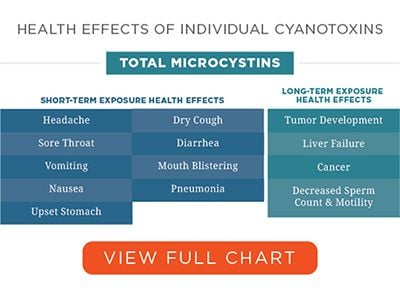It’s already a big year for algae outbreaks
It is not even June, yet algae blooms are already erupting in lakes, rivers and streams across the United States.
Lakes, reservoirs, rivers and streams are critical sources of drinking water. But they’re threatened by toxic algae blooms, fueled by polluted runoff from farms and made worse by climate change.
News
It is not even June, yet algae blooms are already erupting in lakes, rivers and streams across the United States.
Research
EWG’s ongoing tracking has found more than 1,000 communities with news reports of algae blooms in 49 states since 2010 – an increase of more than 600 percent in the past decade.
This enormous sum is just a drop in the bucket of what algae outbreaks are costing Americans … The climate crisis is quickly accelerating what was already a dangerous, expensive problem.

Algal blooms don’t always produce toxic microcystins. When they do they’re not just a gross and smelly nuisance, but can pose serious health hazards to people, pets and wildlife.